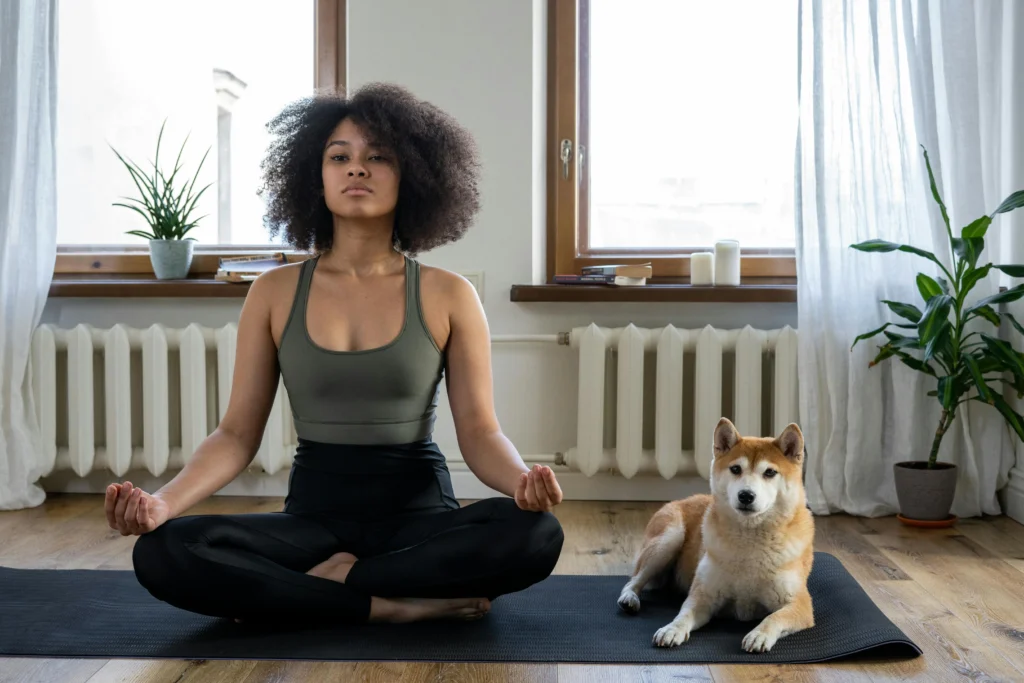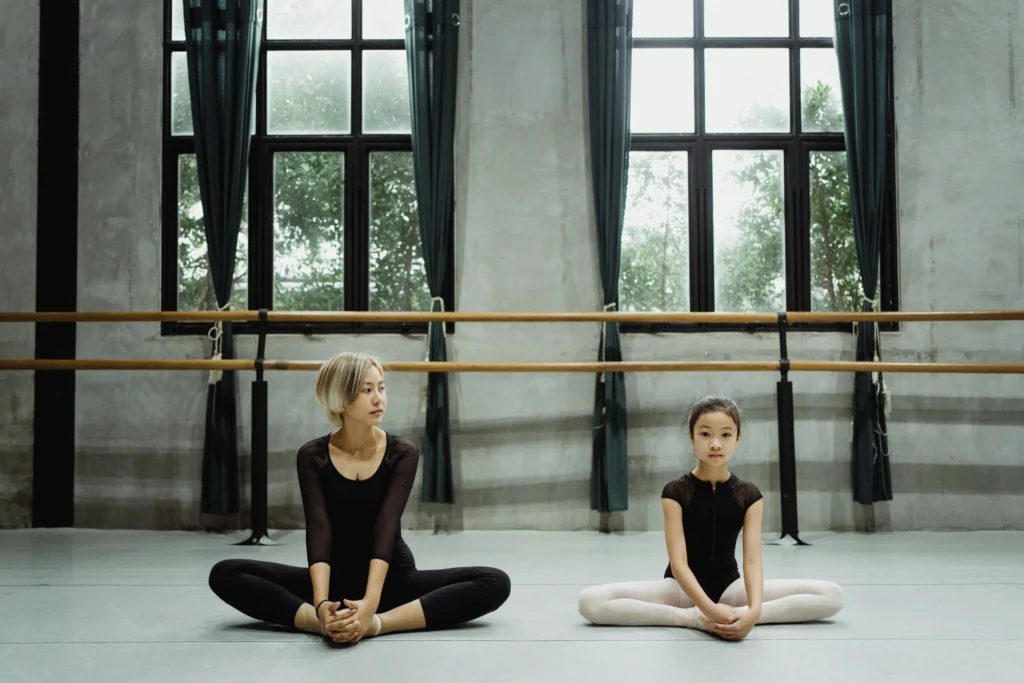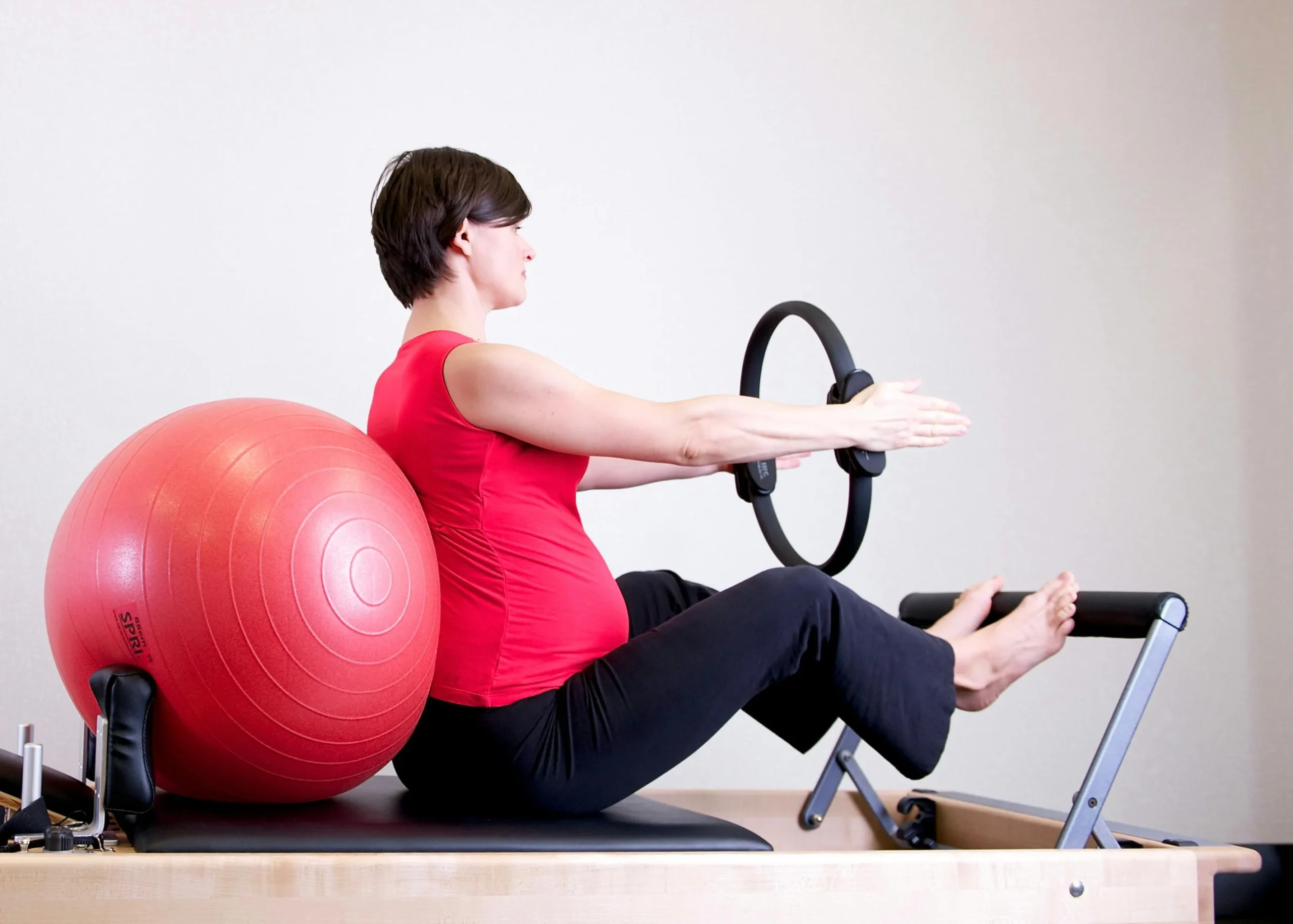Table of Contents
Introduction
Yoga Poses for Flexibility and Weight Loss | Best Beginner Guide 2024 Leave on a transformative excursion towards improved flexibility and powerful weight loss with this comprehensive aide customized specifically for fledgling yoga enthusiasts. Open the numerous benefits of an ordinary yoga practice as we investigate the best poses to assist you with accomplishing your fitness goals.
Whether you’re new to the universe of yoga or seeking to patch up your existing daily practice, this article will furnish you with the information and techniques expected to harness the force of yoga and sculpt a more toned, adaptable physique. From mastering essential poses to understanding the specialty of change, we’ll direct you step-by-step toward a successful and compensating yoga venture.
Key Takeaways
- Discover the best yoga poses to improve flexibility and work with weight loss.
- Understand the comprehensive benefits of yoga, including improved portability, muscle tone, and stress management.
- Learn essential fledgling yoga poses to construct a solid starting point for your training.
- Investigate modifications and the use of props to ensure a safe and comfortable yoga experience.
- Consolidate yoga breathing techniques to intensify the benefits of your training.
Understanding the Benefits of Yoga

Rehearsing yoga offers a great many physical and mental benefits that can profoundly upgrade one’s general prosperity. From improved flexibility and range of motion to increased muscle tone and strength, the transformative force of yoga extends a long way past the physical domain, giving viable stress management and profound relaxation.
Improved Flexibility and Range of Motion
Further developing adaptability and scope of movement offers various advantages, from decreasing the gamble of injury to improving athletic execution and generally speaking personal satisfaction. Here are compelling ways of accomplishing more prominent adaptability and versatility:
- Extending: Integrate both static and dynamic extending into your daily schedule. Static extending includes standing firm on a foothold briefly, while dynamic extending includes traveling through a scope of movement. Expect to extend significant muscle bunches consistently, zeroing in on regions that are tight or limited.
- Yoga and Pilates: These disciplines stress adaptability, strength, and control through a progression of postures and developments. They can assist with working on both adaptability and scope of movement while additionally advancing unwinding and stress decrease.
- Froth Rolling and Self-Myofascial Delivery: Froth rolling and involving different apparatuses for self-myofascial delivery can assist with delivering pressure in muscles and further develop adaptability. Target areas of snugness or uneasiness, rolling gradually and stopping on weaknesses.
- Versatility Activities: Incorporate activities explicitly intended to work on joint portability, for example, shoulder circles, hip circles, and lower leg portability drills. These developments can assist with expanding the scope of movement in your joints.
- Strength Preparing: Developing fortitude in muscles encompassing a joint can assist with working on its dependability and portability. Incorporate activities that target both huge muscle gatherings and more modest balancing out muscles.
- Warm-up and Chill off: In every case warm up before practice with dynamic developments to set up your muscles and joints for movement. Chilling off with delicate extending can assist with keeping up with adaptability and decrease muscle touchiness.
- Consistency: Reliably rehearsing adaptability and portability practices is vital to seeing upgrades over the long haul. Intend to integrate extending and portability work into your schedule a few times each week.
- Stand by listening to Your Body: Focus on how your body feels during extending and portability works out. Try not to drive into torment, and on second thought center around continuously expanding your scope of movement after some time.
- Hydration and Nourishment: Remaining hydrated and eating a reasonable eating routine can uphold generally speaking muscle and joint well-being, helping with adaptability and versatility.
- Rest and Recuperation: Permit your body a satisfactory chance to rest and recuperate between exercises. This permits your muscles and joints to fix and adjust, at last further developing adaptability and scope of movement.
One of the essential advantages of a consistent yoga practice is the improvement of flexibility and range of motion. The various yoga poses, or asanas, target and lengthen the muscles, working on general versatility and permitting practitioners to move with no sweat and ease. Yoga Poses for Flexibility and Weight Loss | Best Beginner Guide 2024 Leave on a transformative excursion towards improved flexibility and power also as you participate in these stretching exercises, you’ll see a continuous increase in your capacity to venture further into poses, opening a freshly discovered opportunity for development.
Increased Muscle Tone and Strength
Past the flexibility benefits, yoga also plays a vital job in developing fortitude and muscle tone, especially in the center, arms, and legs. The weight-bearing nature of numerous yoga poses joined with the focus on legitimate arrangement and muscle commitment, leads to a more toned and characterized physique. As you progress through your training, you’ll see increased perseverance and a more prominent capacity to hold and transition between testing postures.
Better Stress Management and Relaxation
Yoga’s profound effect extends past the physical domain, giving priceless benefits to mental and emotional prosperity. The profound breathing techniques, reflective components, and mental focus expected during yoga practice can ease stress and uneasiness, assisting practitioners with accomplishing an elevated state of quiet and inward harmony. Standard yoga sessions can also advance better sleep, improve state of mind, and foster a more noteworthy sense of by and large relaxation and revival.
Essential Yoga Poses for Beginners
As a novice, it’s essential to start with central yoga poses that assist you with developing fortitude, equilibrium, and body awareness. These basic asanas will lay the basis for further developed yoga practices, permitting you to progress at your speed.

Mountain Pose (Tadasana)
The Mountain Pose (Tadasana) is a simple standing pose that helps to adjust the body and establish a stable establishment. This posture promotes great posture and encourages a sense of establishment, making it a brilliant starting point for any yoga practice.
Tree Pose (Vrikshasana)
The Tree Pose (Vrikshasana) challenges your equilibrium and engages your center muscles. By establishing one foot into the ground and lifting the other leg, this pose helps to work on your focus and fixation, while also strengthening the legs and working on by and large stability.
Child’s Pose (Balasana)
The Child’s Pose (Balasana) provides a restorative stretch and allows for profound relaxation. This quieting posture helps to release tension toward the back, shoulders, and hips, making it an important device for beginners to integrate into their training when required.
Yoga Poses for Flexibility and Weight Loss
To specifically target flexibility and weight loss, certain yoga poses are especially viable. The Sun Salutations (Surya Namaskar) sequence is a unique series of poses that work the whole body, further developing flexibility and boosting metabolism. This streaming sequence of poses, including the Mountain Pose (Tadasana), Forward Bend (Uttanasana), and Plank Pose (Phalakasana), can assist you with developing fortitude, increase range of motion, and raise your pulse for a viable exercise.
Standing Forward Bend (Uttanasana)
The Standing Forward Bend (Uttanasana) is a profoundly nourishing pose that stretches the hamstrings and lower back, advancing more noteworthy flexibility and a sense of quiet. By collapsing forward and permitting gravity to direct your development, you can tenderly lengthen the posterior chain while also stimulating the digestive system, which can be helpful for weight management.
Plank Pose (Phalakasana)
The Plank Pose (Phalakasana) is a basic yoga pose that engages the center, arms, and shoulders, developing chest area fortitude and perseverance. This difficult posture tones the midsection as well as helps to further develop general body arrangement and stability, which are essential for further developed yoga practices and regular activities.
Modifying Poses for Beginners
As a fledgling in the realm of yoga, it’s essential to be aware of your body’s limitations and utilize various yoga modifications and props to guarantee legitimate alignment and safety. Incorporating the right yoga props like blocks, straps, or blankets can assist you with accessing presents effortlessly and comfort, allowing you to gradually extend your practice over the long haul.
Using Props and Modifications
One of the vital standards of fledgling yoga is to respect your body’s necessities and abilities. By using props, you can comfortably investigate represents that may otherwise be challenging or inaccessible. For instance, using a yoga block under your hands in a forward twist can assist you with maintaining legitimate form and diminish strain on your hamstrings. Similarly, a strap can assist in reaching for your feet or offering help in backbends.
Listening to Your Body
Listening to your body is crucial in any yoga practice, yet it’s especially important for amateurs. Pay attention to the inconspicuous prompts your body sends and make sure to or even skirt a posture on the off chance that it feels uncomfortable or past your ongoing capabilities. With time and reliable practice, your adaptability and strength will gradually improve, allowing you to investigate further developed variations of the postures.
Breathing Techniques for Yoga Practice

Breathing is a fundamental aspect of yoga, and incorporating explicit breathing techniques can enhance your practice and give additional advantages. These yoga breathing techniques, for example, the Ujjayi Breath and Alternate Nostril Breathing, can assist with regulating your sensory system, decrease pressure, and advance mental clarity.
Ujjayi Breath (Ocean Breath)
The Ujjayi Breath, also known as the Ocean Breath, is a calming and stimulating breathing method that can assist you with staying engaged and present during your yoga meetings. By tenderly tightening the back of the throat, you’ll create a soft, murmuring sound that looks like the recurring pattern of the ocean. This musical breathing pattern can have a calming impact on the brain and body, making it a phenomenal tool for fledglings to incorporate into their yoga practice.
Alternate Nostril Breathing (Nadi Shodhana)
Alternate Nostril Breathing, or Nadi Shodhana, is a balancing breathing method that can assist with diminishing pressure and advancing mental clarity. By alternating the inhalation and exhalation between the left and right nostrils, you can achieve a feeling of balance and harmony, both physically and mentally. This practice is particularly beneficial for amateurs, as it can assist with calming the psyche and prepare the body for seriously challenging yoga presents.
Importance of Consistency and Progression
Reliable yoga practice is the way to open the full advantages of this transformative discipline, especially for amateur yoga practitioners. Focusing on a regular yoga standard, regardless of whether it’s only a couple of times each week, can lead to significant upgrades in adaptability, strength, and overall prosperity.
Embracing an outlook of yoga progression is equally important. As your practice develops, challenge yourself gradually with further developed stances and variations. Celebrate your small wins and show restraint toward yourself as you navigate the captivating excursion of yoga. By maintaining consistency and embracing progression, you’ll observe tangible enhancements in your physical, mental, and emotional prosperity.
Creating a Yoga-Friendly Environment
Establishing a dedicated yoga space in your home can greatly enhance your practice and assist you with staying motivated. Consider designating an area that is hushed up, sufficiently bright, and liberated from distractions.
Setting Up a Dedicated Space
While setting up your yoga environment, pick a location that gives a feeling of tranquility and concentration. Settle in a room or corner with minimal mess and distractions, allowing you to completely drench yourself in your practice. Guarantee the space is sufficiently bright, either by natural daylight or soft, calming lighting, as it can significantly impact your attitude and experience.
Choosing the Right Yoga Mat
Putting resources into a great yoga mat can give the necessary traction and padding to support your practice, guaranteeing your comfort and safety all through your yoga meetings. Search for a mat that offers a stable, non-slip surface to forestall slipping and sliding during your postures. Additionally, consider the thickness and thickness of the mat to suit your inclinations and the kind of deck in your yoga space.

| Yoga Mat Features | Benefits |
| Thickness | Provides cushioning and support for your joints, especially during floor-based poses. |
| Surface Texture | Offers grip and traction to prevent slipping, especially during sweaty practices. |
| Material | Sustainable, eco-friendly materials like natural rubber or jute can enhance your yoga environment. |
Incorporating Yoga into Your Lifestyle
Yoga is not only a physical practice; it’s a holistic approach to prosperity that can be seamlessly integrated into various aspects of your life. By cultivating mindfulness and adopting healthy eating habits, you can amplify the benefits of your yoga process and achieve a more balanced, fulfilling lifestyle.
Practicing Mindfulness
Mindfulness, the art of being available and aware in the occasion, is a fundamental precept of yoga. By incorporating mindfulness into your daily routine, you can learn to navigate life’s challenges with greater clarity and inner peace. Whether it’s taking a couple of full breaths during a hectic workday or practicing a mindful pause before meals, these small mindful minutes can have a profound impact on your overall prosperity.
Healthy Eating Habits
Complementing your yoga practice with a balanced, nutrient-rich diet can further help your physical and mental health goals. Embracing a yoga lifestyle means nourishing your body with entire, natural food varieties that are rich in vitamins, minerals, and antioxidants. Prioritizing healthy eating habits, for example, incorporating more plant-based food varieties, staying hydrated, and being mindful of your portion sizes, can amplify the benefits of your yoga practice and contribute to your overall fitness and prosperity.

Conclusion
In conclusion, yoga offers an exceptional path to improved flexibility and effective weight loss, making it an ideal choice for beginners seeking a holistic approach to fitness. By understanding the various benefits of yoga, from enhanced flexibility and range of motion to more readily pressure management and relaxation, you can embark on a transformative excursion that enhances your physical prosperity as well as advances mental clarity and emotional balance.
Through the mastery of essential beginner, yoga poses like the Mountain Posture, Tree Posture, and Child’s Posture, you’ll lay the foundation for a sustainable practice that can assist you with achieving your yoga for flexibility and yoga for weight loss goals. Make sure to incorporate proper breathing techniques, for example, the Ujjayi Breath and Alternate Nostril Breathing, to extend your practice and further amplify the benefits.
As you progress on your yoga process, show restraint, listen to your body, and partake simultaneously. Consistent practice, combined with a yoga-friendly environment and a holistic lifestyle approach, will be critical to unlocking the maximum capacity of this transformative discipline. Embrace the excursion, celebrate your advancement, and let yoga guide you toward a more flexible, balanced, and engaged state of being.
FAQ
What are the primary benefits of a regular yoga practice?
Practicing yoga offers a wide range of physical and mental benefits, including improved flexibility and range of motion, increased muscle tone and strength, better pressure management, and more profound relaxation.
What are some essential yoga poses for beginners?
As a beginner, it’s important to start with foundational poses, for example, the Mountain Posture (Tadasana), Tree Posture (Vrikshasana), and Child’s Posture (Balasana). These basic asanas assist with building strength, balance, and body awareness.
What yoga poses are particularly effective for flexibility and weight loss?
The Sun Salutations (Surya Namaskar) succession, Standing Forward Curve (Uttanasana), and Plank Posture (Phalakasana) are highly beneficial for improving flexibility and contributing to weight loss through improved metabolism and toned musculature.
How can beginners modify poses to ensure proper alignment and safety?
Utilizing yoga props, like blocks and straps, as well as listening to your body’s signs and honoring your limitations, are essential for modifying poses as a beginner. This assists you with accessing the poses with greater ease and comfort.
What breathing techniques can enhance a yoga practice?
The Ujjayi Breath (Ocean Breath) and Alternate Nostril Breathing (Nadi Shodhana) are two valuable breathing techniques that can assist with regulating the sensory system, lessen pressure, and advance mental clarity during your yoga practice.
Why is consistency and progression important in a yoga practice?
Consistent practice, regardless of whether only a couple of times seven days is critical to achieving the full benefits of yoga. Additionally, embracing a mindset of progression, and gradually challenging yourself with further developed poses, is essential for continued development and improvement in your yoga process.
How can I create a yoga-friendly environment at home?
Designating a dedicated, quiet, and sufficiently bright space in your home for your yoga practice, as well as investing in a high-quality yoga mat, can greatly enhance your experience and assist you with staying motivated.
How can I incorporate yoga into my overall lifestyle?
Practicing mindfulness, cultivating healthy eating habits, and integrating yoga’s principles of balance and mindfulness into various aspects of your life can assist you with achieving a more holistic approach to prosperity.
